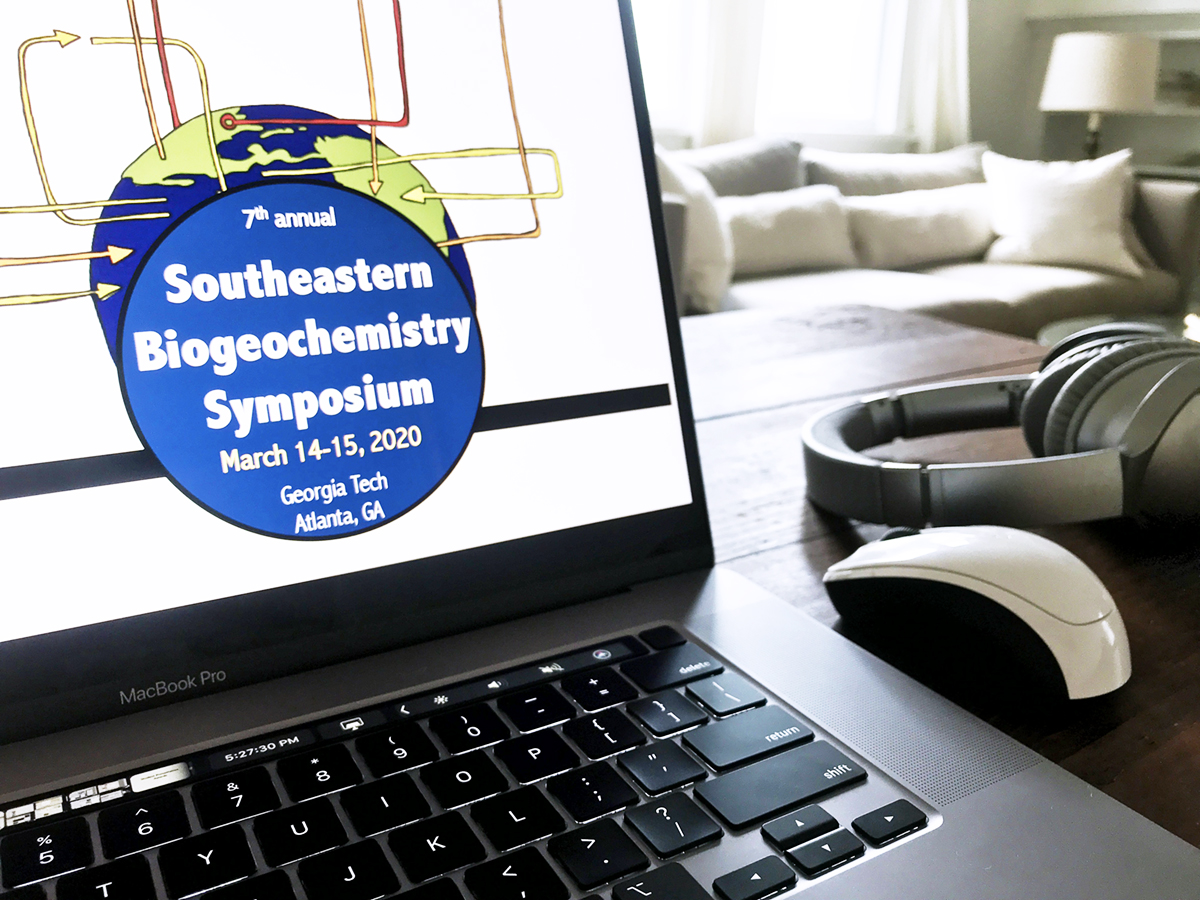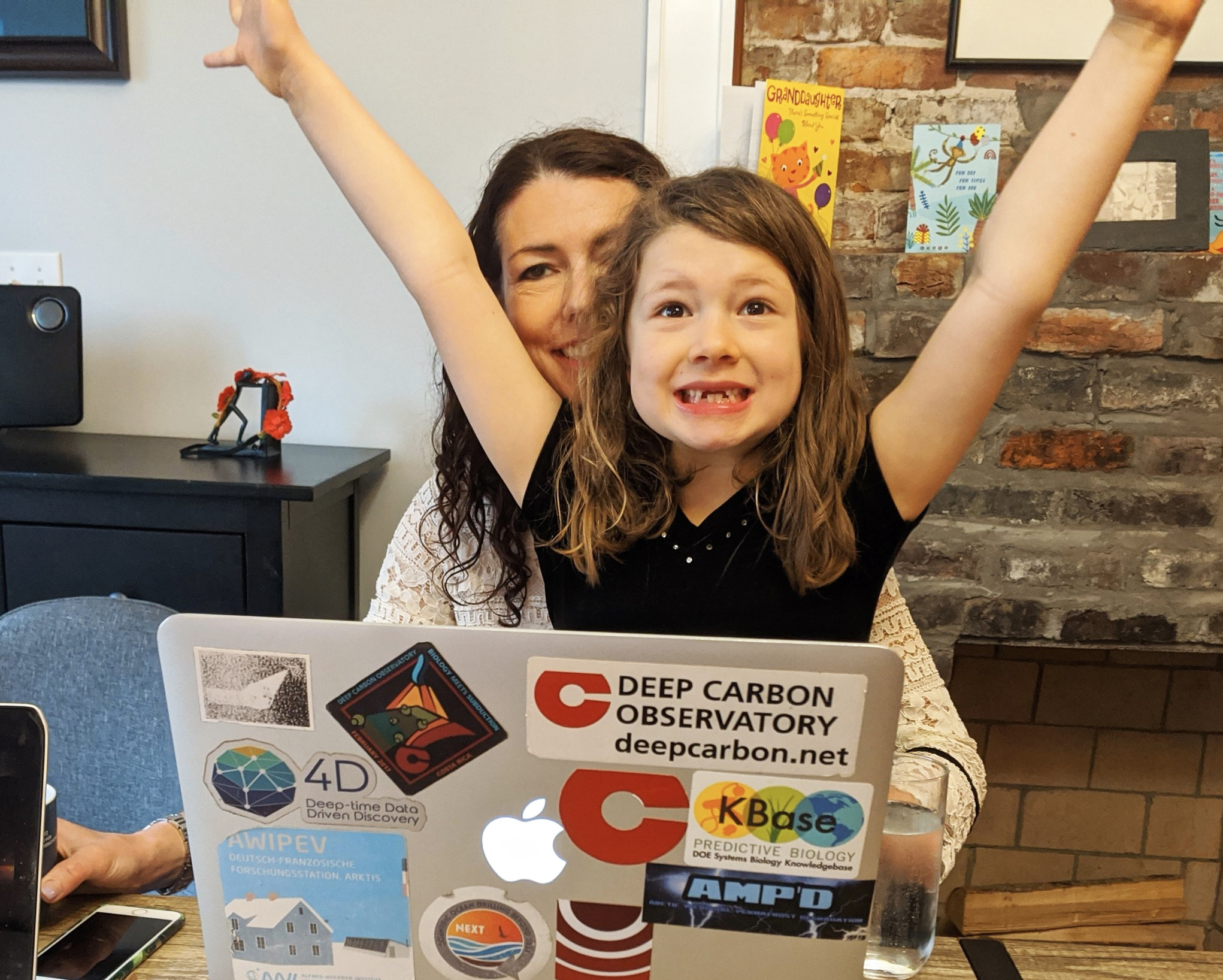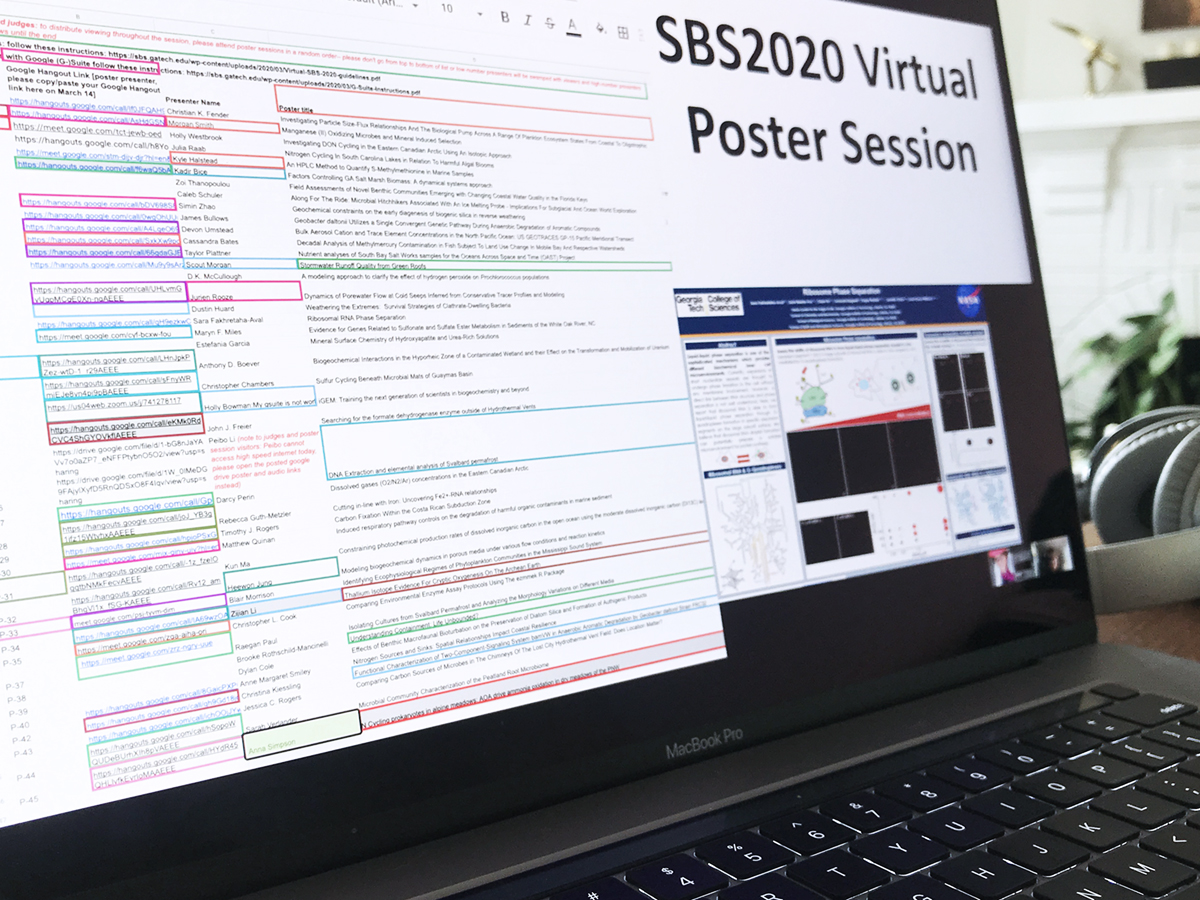Over two days of keynotes, expert talks, a poster session and awards ceremony, students and researchers from around the globe convened at Georgia Tech’s 7th Annual Southeastern Biogeochemistry Symposium to network and share the latest field developments and insights — all from the comfort of their own couches.
Originally set for campus the first weekend of spring break, the conference successfully evolved into an online-only event thanks to a team of creative graduate students and postdoctoral researchers led by Jennifer Glass, an associate professor in the School of Earth and Atmospheric Sciences.
Equipped with three days’ notice and a hashtag, #SBS2020 organizers welcomed dozens of scientists and their families to digitally connect around the physical, chemical, biological, and geological processes and reactions in the natural world.
“We tweeted out the meeting link to the conference, and we were so pleasantly surprised that people from all over the world tuned in,” says Glass.
“There were participants from the UK, from China. My postdoc advisor from Caltech attended the poster session. It was really fun to have folks there who otherwise wouldn’t have been able to attend if the conference were held in person and not available online. An assistant professor in England, James Bradley, who is a lecturer at Queen Mary University of London, live-tweeted the entire conference.”
“We should do this more often,” tweeted one of the symposium speakers, Sarah Andrew, who is a marine sciences researcher from the University of North Carolina - Chapel Hill. “Less time wasted due to travel, not to mention less carbon emissions.”
How To Organize Online
Looking to host your own virtual event or e-conference? Here are a few tips from Glass and the student organizing committee, composed of College of Sciences graduate students Abigail Johnson (Earth and Atmospheric Sciences, Ocean Science and Engineering), Erin Castorina and Pan Liu (Earth and Atmospheric Sciences), Drake Lee-Patterson and Tianze Song (School of Biological Sciences), and School of Biological Sciences postdoctoral researcher Caitlin Petro, who organized judging:
Check Your Tech Toolbox
-
See if your university already has a subscription to a video conferencing service like BlueJeans or Webex. “We used Webex because it could accommodate up to 1,000 people with Georgia Tech’s subscription, whereas BlueJeans’ limit was 100,” says Glass.
-
Use a free URL shortener. Help guests arrive at the proper links quickly by shortening URLs for your meeting links to something memorable, instead of long, randomly generated URLs. Here’s how.
-
#RememberToHashtag. Assign a memorable hashtag for your meeting so people on social media can easily create, find, and interact with posts about the conference.
Prepare Your Audience, Practice with Presenters
-
Provide very clear instructions. Create a simple prep guide for attendees, presenters and judges that includes your conference schedule, key links, setup instructions, session guidelines, and general online collaboration etiquette. If you need a starting point, check out the #SBS2020 Virtual Meeting Instructions here.
-
Practice audio/visual/screen sharing ahead of time with presenters. They might not know that they need help, so insist that everyone practices ahead of time. Make sure they have a quiet place to speak with a properly functioning microphone, and enough internet bandwidth to share their screen.
-
Set up central command — and a cheering committee. “We had a central command where four of the organizers hosted,” Glass says. “Two other student organizers stayed home and hosted from afar. It was helpful to have a small group together to coordinate in person, but it’s not essential if strict social distancing policies are in place. We all cheered loudly at the end of each presentation, to make up for the fact that everyone else was muted.”
Streamline Virtual Poster Sessions
-
Create an online spreadsheet where poster presenters can share links to individual virtual meeting rooms, which can be set up for free through a service like GT BlueJeans.
-
Poster session visitors simply navigate to the spreadsheet, and click on a presenter’s room link to directly connect and live chat with the poster presenter, who can screen share each poster and zoom in to highlight specific areas.
-
With this setup, multiple visitors can view posters at once, and also come and go as they please. Glass says several people even commented that they preferred this to a physical poster session.
Successfully Manage Your Sessions
-
Using the chat box for questions from the audience. We asked the audience to keep their mics muted during the oral presentations to avoid background noise.
-
Chime for time. Use a chime sound to indicate specific time points when the speaker is nearing the time limit, because the speaker won’t be able to see time cards or other visual cues.
-
For each session, assign one “technical” chair and one “intellectual” chair. “The technical chair times the talk, does the chiming, and mutes any stray microphones,” explains Glass. “The intellectual chair introduces each speaker and thinks up questions to ask them during the talk, in case there aren’t enough audience questions to fill the Q&A, and also reads questions in the chat box. You can rotate through the organizing committee so everyone gets a chance to serve in each role.”
-
Equip judges to self-score online. If you have judging at your conference, use an online score entry system because you won’t be able to gather forms in person. Plus, Glass notes, it’s much faster when the judges enter their scores themselves.
-
Ask the audience. Finally, don’t be afraid to engage your audience. She adds, “We had a few judges cancel due to emergencies at the last minute. A professor from Dartmouth who was watching online kindly stepped in to judge.”
“It was totally free and carbon neutral. We would have preferred the fun opportunity to meet in person and share meals, but going virtual enabled a lot of people to be there who otherwise wouldn’t have been able to attend.”
Related links:
For More Information Contact
Jess Hunt-Ralston
Director of Communications
College of Sciences
Georgia Institute of Technology





